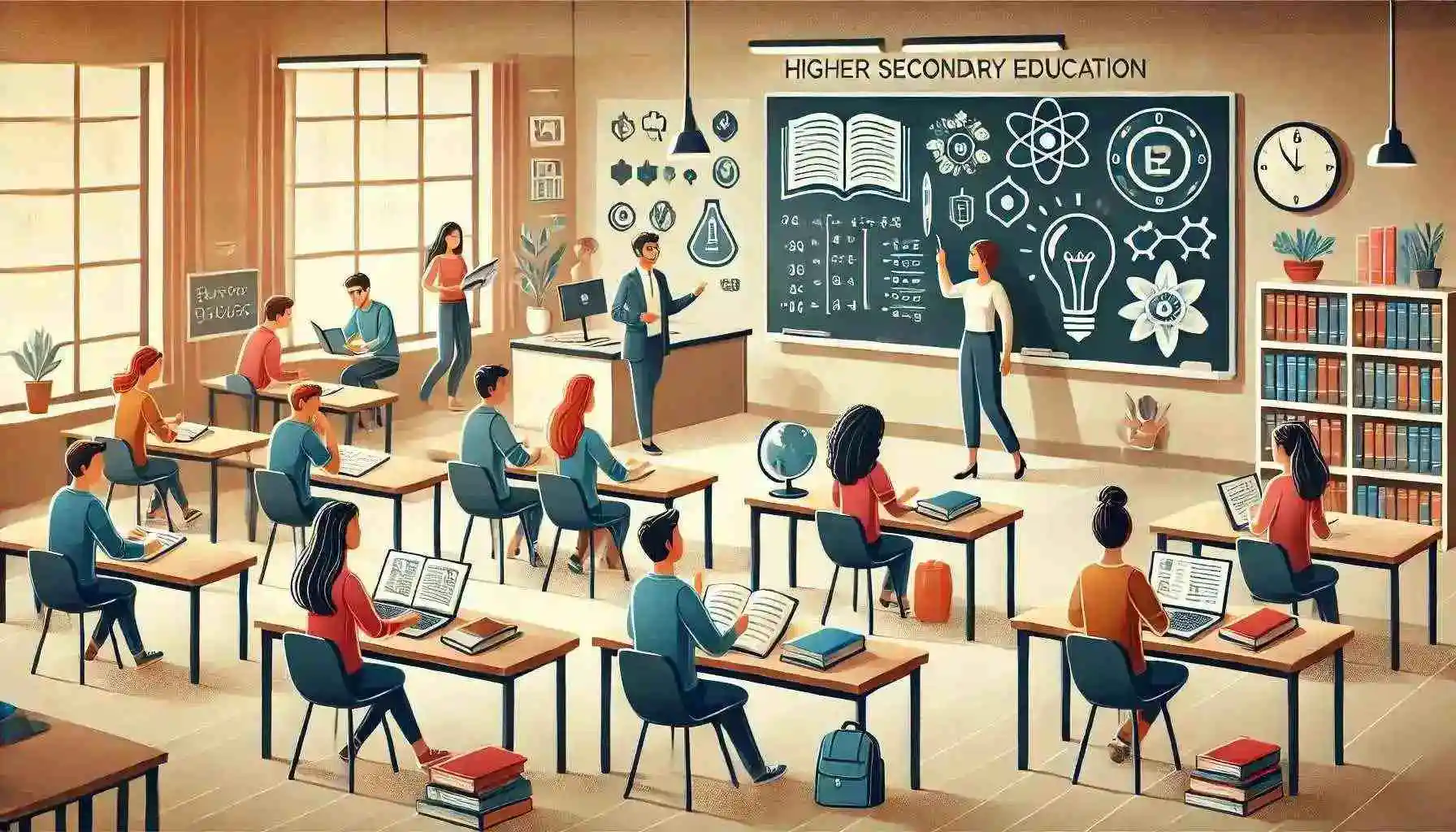Higher Secondary Education in Pakistan refers to grades 11 and 12, also called Intermediate. It prepares students for university and professional careers.
Students enroll after completing Matriculation (grade 10) and choose specialized streams like Pre-Medical, Pre-Engineering, Commerce, or Arts.

Education Systems in Pakistan
Pakistan offers diverse education systems at the higher secondary level.
- HSSC (Higher Secondary School Certificate)
- Offered by provincial boards (e.g., FBISE, BISE Lahore, BISE Karachi).
- Two-year program divided into Part 1 (11th grade) and Part 2 (12th grade).
- Exams are conducted by boards at the end of each year.
- Cambridge System (A-Levels)
- Offered by private schools.
- Internationally recognized; includes exams graded by Cambridge International.
- IB (International Baccalaureate)
- Available in elite private institutions.
- Focuses on critical thinking and research.
Subjects and Streams
Students pick a stream based on career goals:
- Pre-Medical: Biology, Chemistry, Physics.
- Pre-Engineering: Mathematics, Chemistry, Physics.
- Commerce: Accounting, Business Studies, Economics.
- Humanities and Arts: Sociology, Psychology, Literature.
- Computer Science: Combines subjects such as mathematics, physics, and computer studies, making it ideal for students aiming to enter the IT field.
- The FA degree is a 2-year arts program focusing on subjects like English, Urdu, and social sciences, opening doors to teaching, civil services, and creative careers.
Read About:
- Best Career Options After FSC in Pakistan: A Complete Guide
- How to Prepare for Competitive Exams
- Studying Abroad After Intermediate
- Job Prospects After Intermediate in Pakistan
Examination Boards
- Federal Board (FBISE): Popular for transparency.
- Provincial Boards: BISE Lahore, BISE Karachi, etc.
- Cambridge Assessment International Education: For A-Levels.
Top Schools with Strong Profiles
- Beaconhouse School System (Multiple branches).
- The City School (Nationwide network).
- Lahore Grammar School (LGS).
- Karachi Grammar School.
- Roots Millennium Schools.
Why Higher Secondary Education Matters
- University Admissions: Grades 11–12 marks are critical for bachelor’s programs.
- Scholarships: High scorers get financial aid.
- Career Paths: Stream selection aligns with fields like engineering, medicine, or business.
Tips for Success in HSSC
- Start Early: Master foundational concepts from grade 11.
- Past Papers: Solve board exam papers for practice.
- Time Management: Balance studies and extracurriculars.
- Tutoring: Join academies for tough subjects like Physics or Accounting.
You May Also Know:
- Top Colleges in Lahore
- Top ICom Colleges in Lahore
- Best Law Colleges in Faisalabad
- Top Colleges for ICOM in Faisalabad
- Top Medical Colleges in Pakistan
- Best Colleges in Rawalpindi for Boys & Girls
- Top 10 Colleges in Karachi
- Top 8 Colleges in Islamabad
FAQs:
Q: What is HSSC?
The national Higher Secondary School Certificate awarded after grades 11–12.
Q: Can I switch streams after Matric?
Yes, but it requires catching up on new subjects.
Q: How do I check board results?
Visit your provincial board’s website (e.g., bise.lahore.gov.pk).
Q: Is A-Levels better than HSSC?
A-Levels suits students aiming for abroad universities; HSSC is ideal for local admissions.
Conclusion:
Higher Secondary Education in Pakistan shapes a student’s academic and professional journey. Choosing the right stream, school, and exam board is crucial.
Use Google profiles to compare schools, focus on semantic keywords like “HSSC subjects” or “Intermediate exams,” and prioritize quality learning to secure top grades.

